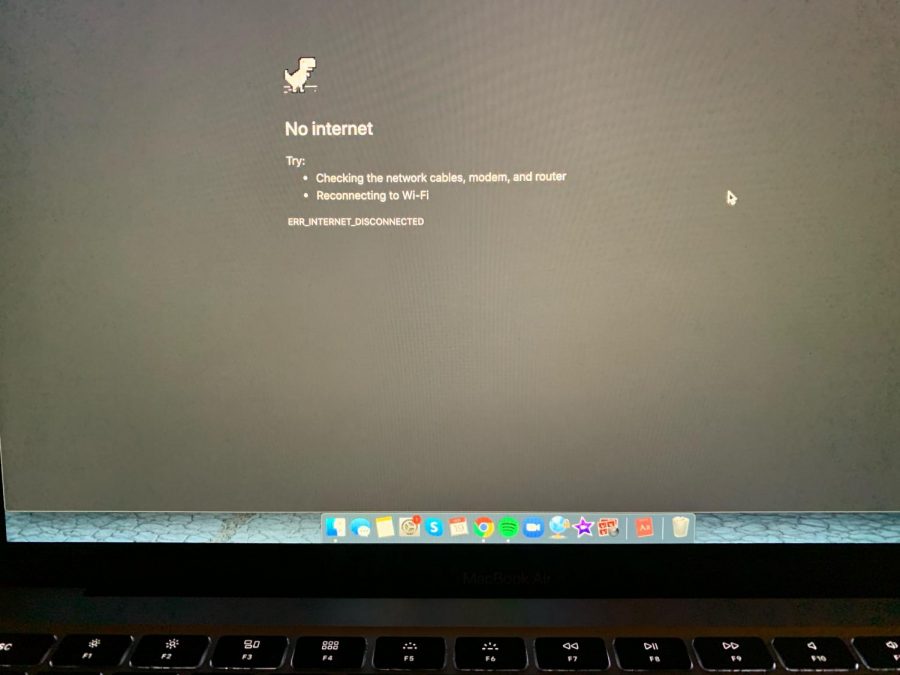Technology issues interfere with online learning
Spotty internet is a common occurrence in remote learning and can cause minor disruptions to student learning.
November 19, 2020
During remote learning, technology issues have been a consistent concern in the lives of many students and teachers, but also remain controversial as students often cite these issues to get out of in-class participation.
Students have had varying experiences with Zoom and Google Meet, the two major video conferencing platforms used to conduct classes this school year.
“To me, I thought Google Meet was really glitchy. Sometimes when my teachers present stuff, you can’t really see the content that they’re presenting or it would lag a lot so I like Zoom a lot more,” said Sharanya Udupa (‘21).
With a large number of people – often multiple members within a household – using technology during this time technological issues are inevitable.
“One technology issue that I’ve personally encountered is my Internet cutting out in the middle of class. Because my sister, my dad, and I are all simultaneously on Zoom in the morning, our network bandwidth is low,” said Vivien Song (‘21).
Access to technology differs amongst students and the Pleasanton Unified School District has tried to address the clear divide between those who have the proper resources to fully participate in remote learning, and those who do not.
“Generally, I think that there are equity issues that have been arising for people. Our district has been pretty good about making sure that everyone has connectivity through hotspots and Chromebooks but it still doesn’t always narrow the technology gap,” said AV English and Comp Civics teacher Stacey Sklar.
While a lot of people are facing legitimate technological concerns, some students take advantage of these commonly cited issues to avoid participation in class. A 2020 survey by Educators for Excellence found that only 60% of students were participating in class during remote learning.
“I’ve talked to some people and they say that they have wifi problems when they don’t so they can get out of participation and then they mute themselves and put video off. And sometimes when they do need to participate, they’ll just type it into the chat instead,” said Udupa.
Teachers are aware of the common excuses cited by students, but also try to give them the benefit of the doubt and recognize that the equity gap or general technology issues may genuinely impair student learning.
“I’m just grateful that I can teach in a safer environment right now so I’m trying to roll with it…and give people the benefit of the doubt. I realized that people will continue to learn as long as we can discuss and view things together,” said Sklar.






Gavin • Apr 13, 2021 at 7:17 am
Hi
Rob • Apr 21, 2022 at 4:20 pm
hi